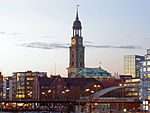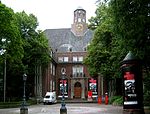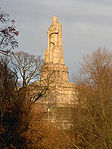Brahms Museum (Hamburg)
1971 establishments in GermanyAC with 0 elementsBiographical museums in GermanyJohannes BrahmsMuseums established in 1971 ... and 2 more
Museums in HamburgMusic museums in Germany

The Brahms Museum is a museum in the Composers Quarter in Hamburg-Neustadt, Germany. It is dedicated to the classical composer Johannes Brahms.
Excerpt from the Wikipedia article Brahms Museum (Hamburg) (License: CC BY-SA 3.0, Authors, Images).Brahms Museum (Hamburg)
Peterstraße, Hamburg Neustadt
Geographical coordinates (GPS) Address Nearby Places Show on map
Geographical coordinates (GPS)
| Latitude | Longitude |
|---|---|
| N 53.551238888889 ° | E 9.9768694444444 ° |
Address
Peterstraße 35
20355 Hamburg, Neustadt
Germany
Open on Google Maps







